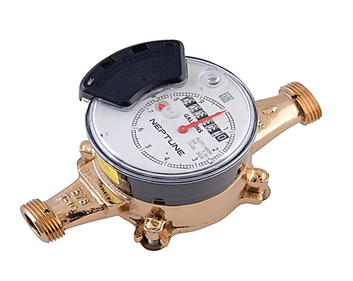HOW TO READ YOUR WATER METER
It is important for water customers to know how to locate and read their meter. You can track your daily water usage by recording a reading at the beginning and end of the day, with the difference between the readings being the water used for the day. Another reason to know how to read the meter is to check for leaks. If you are not using any water and a check of the meter shows it is still turning, this may indicate a water leak. Further tests can help determine if the leak is more likely in the home or in the service line that runs from the meter to the structure.
The meter is generally located near the curb in front of your home or business. Meters are housed in a meter pit covered with a cast iron lid marked “water”. To read your meter, carefully remove the lid and lay it to the side or if there are wires for a transmitter attached, gently lay it back so as not to stretch the wires. When you have recorded the reading, replace the lid and be sure it rests securely on the meter pit.
The size of the water meter is typically printed on the face of the meter. The most common size for a single family home is 5/8” or 3/4”. Meters may vary in design, model or size and are read manually or by electronic meter reading equipment. Consolidated Water measures water in gallons.
The following photos are examples of the meter that may serve your home or business.
Meter Example No. 1:
This is a basic meter and the reading is similar to the operation of an odometer in a car. There are 6 numbered mechanical dials on this meter with the seventh number being a stationary “0”. You read the numbers from left to right. The red needle sweeps continuosly as water is used and a complete revolution measures 10 gallons. The small red triangle is commonly referred to as a leak indicator. If no water is being used, but the leak indicator is turning, you may have a leak. If there is no obvious sign of a leak, start with a check of your toilets and faucets. It is a good idea to periodically check for leaks.
Meter Example No. 2:
This meter is an electronic meter commonly referred to as an E-Coder. Water is measured in the same manner as the basic meter, but the reading is in a digital form. The reading is only visible when light shines on the solar cells above the meter reading field. A small flashlight can be used to provide light to display the reading if normal daylight is not sufficient. The digital reading display alternates with the flow rate display. In addition, this meter displays the direction of flow through the meter and provides a flashing or continuous image of a dripping faucet if it detects a possible leak. This meter is a valuable resource tool for the customer and the District with the history reports it can provide and it’s leak detection and diagnostic capabilities. This meter is read remotely utilizing a transmitter that is attached to the meter.

Meter Example No. 3:
This meter is also an electronic E-Coder meter and differs only in design from the E-Coder meter above. This E-Coder has an integrated transmitter, and as such does not require installation of a separate transmitter to facilitate remote meter reading. Measurement, reporting and diagnostic capabilities are the same in all E-Coder meters in use by Consolidated Water.


